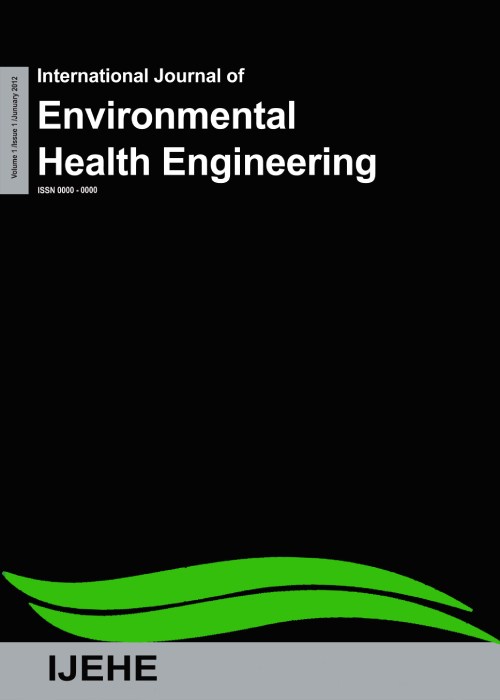فهرست مطالب
International Journal of Environmental Health Engineering
Volume:7 Issue: 2, May 2018
- تاریخ انتشار: 1397/02/11
- تعداد عناوین: 2
-
-
Page 1Aims
Phthalates (e.g., diethylhexyl phthalate) act as one of the endocrine disruptive compounds and can have adverse effects on different biological pathways including hormonal receptors, affecting the synthesis, secretion, or metabolism of hormones. The aim of this study was, method development of the dispersive liquid-liquid microextraction (DLLME), to determine the monoesters of diethylhexyl phthalate in children and adolescents in Isfahan city, Iran.
Materials and MethodsThis study was conducted in 2016 (during a year) on 242 children and adolescents, aged 6–18 years, living in Isfahan, Iran. In this method, acetonitrile and chlorobenzene were used as disperser and extractant, respectively, to extract the investigated monoesters. The analytes were determined by gas chromatography–mass spectrometry.
ResultsAcetonitrile (as disperser) and chlorobenzene (as extractant) were used for monoester phthalates extraction (750 μl of acetonitrile and 80 μl of chlorobenzene). The results indicated that the recovery and relative standard deviation (RSD) of the utilized method were 55–109 and 6.3%–13.2%, respectively. The limit of detection and limit of quantification (LOQ) of the method were 0.024–0.088 and 0.05–0.48 μg/L, respectively. Monoethylhexyl phthalate (MEHP), monoethyl oxo-hexyl-phthalate (MEOHP), and monoethyl hydroxyl-hexyl-phthalate (MEHHP) were observed in 99.6%, 95.87%, and 96.28% of the studied samples, respectively. The mean concentration of MEHP, MEOHP, and MEHHP in the study population was 151.7 ± 143.8, 258.26 ± 143.07, and 194.17 ± 147.3 μg/L, respectively.
ConclusionAcetonitrile (as disperser) and chlorobenzene (as extractant) were suitable solvents for phthalate monoesters extraction in method development of DLLME. On the other hand, the mean concentrations were very high values in comparison with other similar studies that require the attention and legislation regarding limitation of the application of phthalate compounds.
Keywords: Biomonitoring, Isfahan, metabolite, urinary phthalates -
Page 2Aims
Health-care waste is one of the most crucial issues in solid waste management due to its adverse effects on human health and the environment. The aim of this study was to investigate the present situation of health-care waste management in Sajadieh Hospital in Torbat-e Jam to find the major challenges and offer the best practice regarding this issue.
Materials and MethodsThis cross-sectional study was conducted in Sajadieh hospital in Torbat-e Jam in 2017. The total amount of waste produced in hospital was measured for 3 months. Waste management pattern was carried out based on a checklist obtained from the Ministry of Health (MOH) of Iran. Excel software was employed for data analysis.
ResultsIn total, the mean amount of wastes generated in studied hospital was 658.9 kg/day, including domestic waste (397.6 kg/day) and hazardous waste (261.4 kg/day). The highest amount of hazardous wastes was generated in operating room with 32.9 kg/day. Quantity analysis of total waste showed that food wastes (25%) comprise the highest fraction. Based on MOH checklist, the status of the waste management practices was determined as fair.
ConclusionsThe results of this study showed that despite the segregation of hospital wastes, the amount of hazardous wastes were higher than recommended guidelines. Therefore, more attention of the authorities and the correction of hospital waste management are required.
Keywords: Hazardous waste, Health Care, Solid waste


